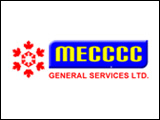Two weeks ago, Manitoba published its Peatlands Stewardship Strategy to promote the sustainability of peatlands in the province.
Peatlands are organic wetlands that contain a deep layer organic material know as peat. They are found in bogs which receive water from only rain or snow, and fens which receive mineral rich groundwater. Across Manitoba, 34% of the land area is covered by peatlands, which are the most efficient terrestrial ecosystem in storing carbon in the long-term.
Peatlands don’t just store carbon. They are very effective at storing water, and they provide a valuable resource for conservation of our rich biodiversity of aquatic species, birds and plants.
Peatland destruction, as well as destroying habitat that has taken 100’s or 1000’s of years to develop, releases carbon back into the atmosphere contributing to greenhouse gases. Peatlands are destroyed by peat harvesting, mining, agriculture, forestry, hydroelectric and other developments. Peat harvesting is estimated to contribute to 3% of greenhouse gas emissions in Manitoba.
The Manitoba Peatland Strategy ensures no new peatlands will be created either through new licences or new extractions on existing leases.
As individuals, we can support the strategy by opting for alternatives to peat moss, and peat-based soils in our gardens. There are some schemes to restore peatlands, which will offset some of the impact we have, but the best option is to avoid its use. Many of the alternatives work at least as well if not better than peat moss at half the price.
The easiest, cheapest and most environmentally friendly option for improving your soil is to use compost. It often provides more nutrients than can be found in sterilized peat. Of course, the most ideal source is from your own food scraps and garden waste, but if you don’t have the space to make your own, compost made from garden waste collected in Steinbach is available for collection from the Steinbach Landfill.
Peat is a poor choice for mulching because it has a tendency to dry out and be blown by the wind. Better mulches are cedar, pine needles, bark, cocoa shells or straw, although you should beware the use of cocoa in the presence of dogs who are allergic to cocoa.
Coir, the fibrous part of coconut shells is a good potting medium, mulch cover and soil improver. It holds more moisture than peat moss, for longer, and it breaks down in the soil more slowly. A small pack of coir will hold up to 10 times its weight in water. Despite coming from Sri Lanka and India it has a low carbon footprint due to its capacity to hold water.
I encourage you to give these a try in your hanging baskets and pots and vote with your choice, leaving more peat for wildlife and carbon capture.



